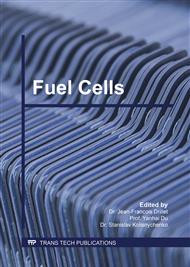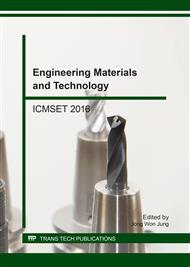p.329
p.335
p.341
p.347
p.354
p.360
p.367
p.373
p.379
Moisture Elimination of the Wet Hydrogen Gas Using the Electrochemical Hydrogen Compressor with a Modified MEA Composition
Abstract:
The electrochemical hydrogen compressor (EHC) is used as a moisture elimination tool for the wet hydrogen gas. As the pressure of cathode compartment increases, the moisture contents of hydrogen decrease, however, the electrochemical performance of the compression cell is deteriorated. In the high enough pressure difference conditions between anode and cathode the electrochemical performance loss results mainly from the dehydration of the proton exchange membrane. In this article the MEA (membrane electrodes assembly) is modified to keep the water molecules not only in the membrane but also in the cathode catalytic layer. Then the electrochemical performance of the hydrogen compression cell is measured with the moisture elimination ability. The variously modified MEAs are tested and the surfaces of modified electrodes are pictured by scanning electron microscope.
Info:
Periodical:
Pages:
354-359
Citation:
Online since:
June 2017
Authors:
Price:
Сopyright:
© 2017 Trans Tech Publications Ltd. All Rights Reserved
Share:
Citation:



